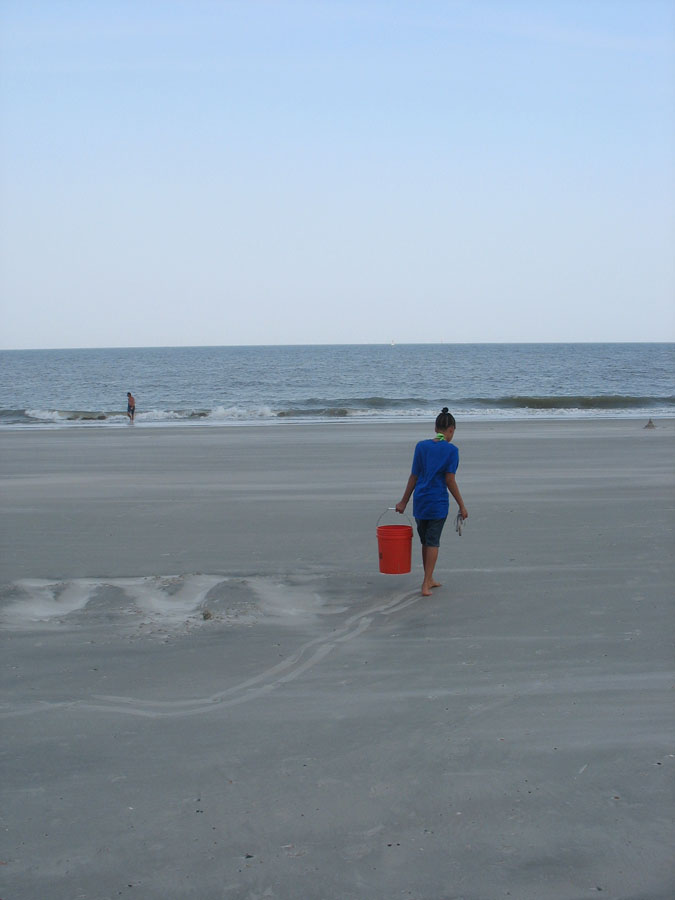 My granddaughter Kylett, August, 2011 on Tybee Island, Georgia.
My granddaughter Kylett, August, 2011 on Tybee Island, Georgia.
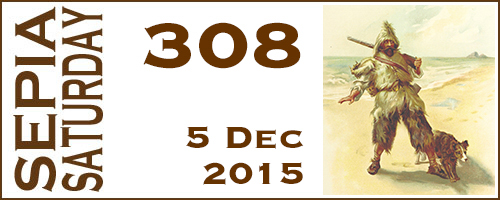
 My granddaughter Kylett, August, 2011 on Tybee Island, Georgia.
My granddaughter Kylett, August, 2011 on Tybee Island, Georgia.

Here I am under the apple tree with my cousin Barbara where we built and rebuilt a castle for our fairies. Each family had one. Ours was Pinkie my cousins was Lucy. In between the castles we made various dirt pies and cakes. That little black utensil next to me was a sifter. It had holes punched in the bottom and we sifted the dirt with it.
We used to walk up the plank against the back fence and look out into the alley. Nothing really exciting out there, most of the time although I remember the police chasing a man through there once. I am pretty sure we were not standing on the plank watching. If we did, it was only for as long as it took an adult to call us inside While the chase went on.
It must be spring because we can see that there is no garden bu the Pussy Willow bush in the background seems to have buds. We are wearing our light jackets (or “jumpers” as Poppy called them.) and overalls. My saddle shoes are horribly dirty. My socks had probably slid down inside of them. Barbara is wearing buckled shoes but her socks look quite saggy. In the spring of 1955 I would have been 8 and Barbara would have been 7. She is missing a tooth, but not those you loose when you are 6.
In the fall my grandmother made the best applesauce with the apples from that tree. They were not the kind you eat uncooked. In spite of the sticky stuff my grandfather painted around the tree trunk, there were worms in the apples and they were very small and sour. They made the best applesauce ever though, with lots of cinnamon.
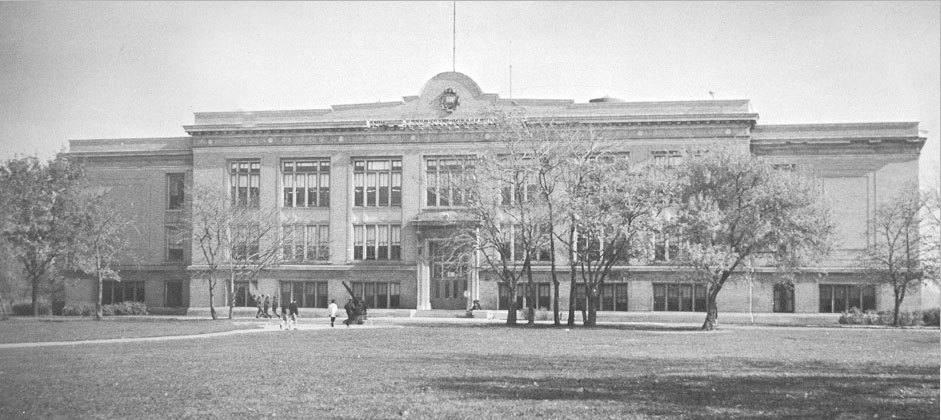
When I finished writing up this post, I googled Northwestern High School and found the following statement in an online article from 2011 about school closures in Detroit:
“The academic program at Northwestern High School will close and the Detroit Collegiate Preparatory High School program will relocate from the east wing of Northwestern into the main academic part of the facility. Because of the importance of the Northwestern name to DPS and the community, this new program will be called Detroit Collegiate Preparatory High School at Northwestern.”
So, like so many other places of importance in my early life in Detroit, Northwestern High is no more. The original building was replaced in 1980 and the school was closed in 2011. So many of my family attended high school at Northwestern, some just for a year or two. Here is something about those who graduated, starting with Alberta Cleage in 1927 and ending with my sister Pearl in 1966.
Click on any image to enlarge.
___________________
Cousin Alberta Cleage, my grandfather’s brother Edward’s daughter, came up from Athens Tennessee to stay with her Uncle Albert and his family and graduated from Northwestern High School in 1927.
________________
______________
My uncle Louis Cleage graduated Cum Laude in 1931 and appeared in a picture of the physics lab, right there lower right, first desk. Advertisements for his medical practice appeared in the Norwester in 1941 and 1942.
___________________
Henry Cleage appears in a photograph of the orchestra in 1933 and as a graduating senior in 1934. He is in the back row, 4th from the left with his cello.
__________________
My uncle Hugh Cleage graduated in 1936, unfortunately that yearbook is missing.
My aunt Barbara Cleage graduated in summer school in August of 1938

__________________
My aunt Gladys Cleage graduated in 1939. In the photo on the right Gladys is standing in front of the back steps. You can see Henry over her right shoulder. Not sure who the other two are but my grandmother Pearl is looking through the screen door.
___________________
My cousin Geraldine Cleage, Uncle Henry Cleage’s daughter graduated in 1940. They lived a few blocks from my grandparent’s house on Scotten.
______________________
Anna Cleage graduated from Northwestern in 1942 and appeared in the Norwester and in 1947 in the yearbook when she graduated from Wayne State University.
I, Kristin Cleage, graduated from Northwestern in 1964.
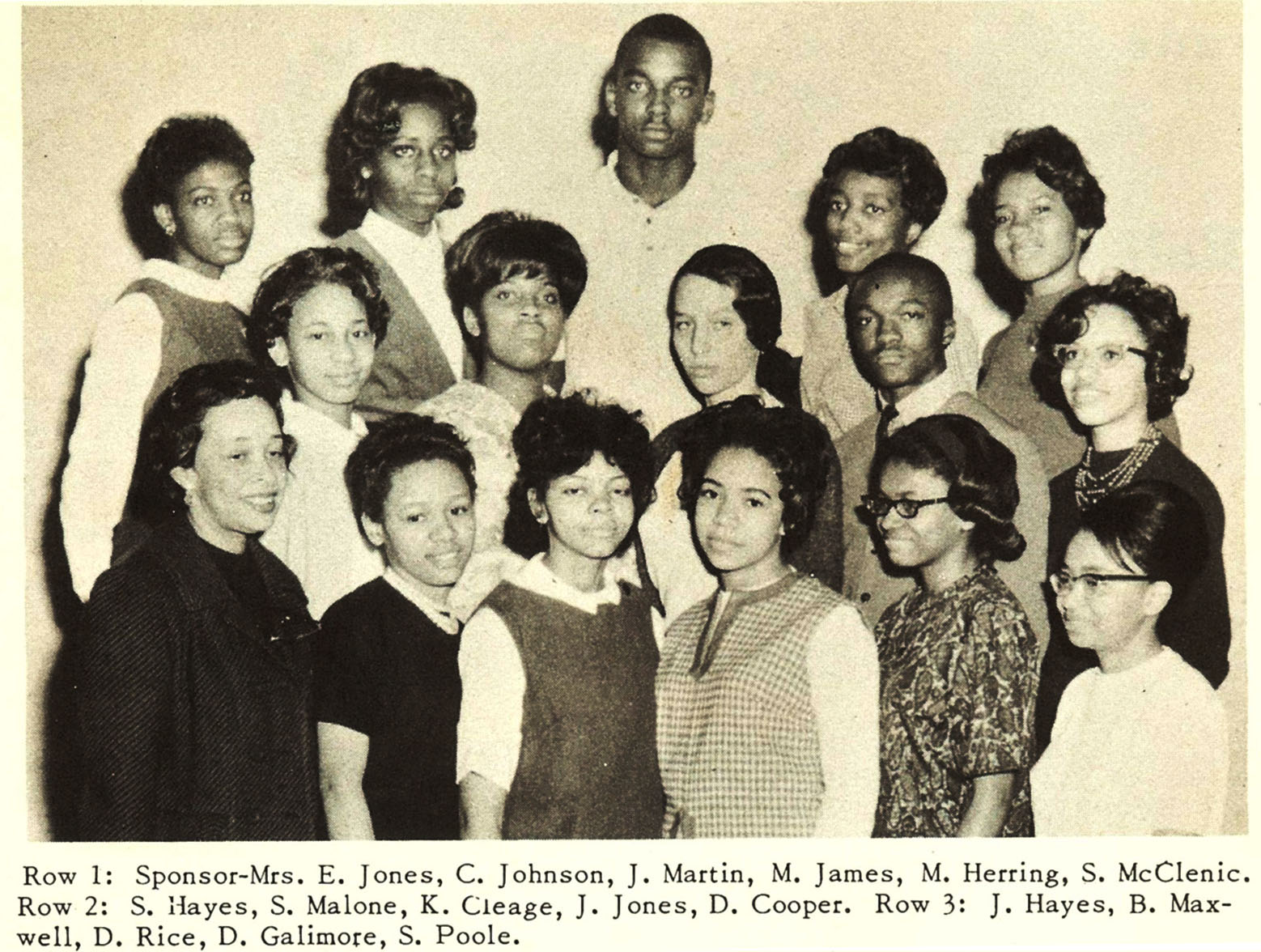
That is me in the middle, 2nd row. I pretty much looked like that throughout my high school career. I did not take a senior photo and didn’t plan to go to my graduation, but did end up going. Do not remember a thing about it.
_____________

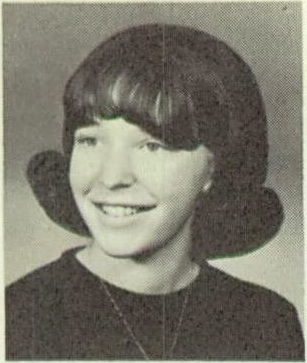
My sister Pearl Cleage graduated from Northwestern in 1966.
Pearl gave the valedictorian speech at her graduation. Jim advised her to speak out against the war in Vietnam. She was horrified at the thought and regrets now that she did not do it.
_________________
Several family members attended Northwestern for part of their four year high school career and then transferred to other schools. Some were Ruth Cleage, Shelton Hill, Ernest Martin and Betty Floyd.
Mershell, Mary V. and Doris Graham, my mother sitting on their front steps waving balloons on sticks. It was 1926. The house was on Theodore, the east side of Detroit. Sometimes I dream about this house and the porch usually figures in the dreams as I leave or enter or start down the street going somewhere.
Other posts about the house on Theodore are – Everyday Things Then and Now and T is for Theodore Street

Several weeks ago I was contacted for permission to use my photograph on a poster for a presentation at the School of Social Policy, Social Work and Social Justice University College Dublin. Here is a copy of the poster. The photograph first appeared in the post – Then and Now – Atkinson About 1953.
You can read more about the presentation here: Intergenerational transfers and housing tenure: Australian evidence
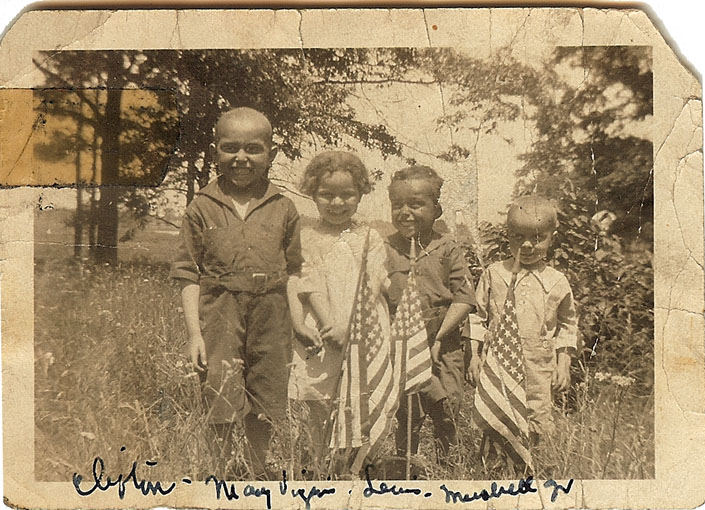

Perhaps an answer to the mystery photograph from Sepia Saturday #303, also pictured below. Cliff was my grandfather M.C. Graham’s play brother and their families first roomed together and after the first children were born, they both occupied a two family flat, 1 family per flat. Their children were born close together. Looking at the little pal in the first photograph with my grandfather Mershell, I think he could be the child in the other photograph. He is several years older in the line in the second photo. His ears in all three pictures bend a bit at the top. Perhaps the woman was his mother, Gwen pictured in the last photo. Or maybe I need to keep looking for her.
In 2011 a genealogy friend of mine, Megan Heyl of Hunting Down History, was helping me find the death date and place for my great grandfather, Louis Cleage. She wrote to the Indianapolis Public Library and asked librarian Mike Perkins if he could tell us anything. At the time, he could not. However, on October 6, 2015, he sent a copy of Louis Cleage’s death notice from the Indianapolis Star. That is 4 years later!
I wondered what was happening on the day he died. Using Newspapers.com, I was able to locate the full issue of The Indianapolis Star for February 7, 1918 and find out. The first thing I noticed when looking at the full list of deaths for that day, was that 6 of the 11 people that died, died of pneumonia. Below is a collage made from articles and advertisements in that day’s issue of The Indianapolis Star.
Other posts about Louis Cleage.
Louis Cleage & Family 1880
Louis Cleage – Work Day
Louis Cleage (pronounced Kleg)
Louis Cleage (pronounced Kleg)
Louis Cleage burial Spot
Louis Cleage’s Death Certificate